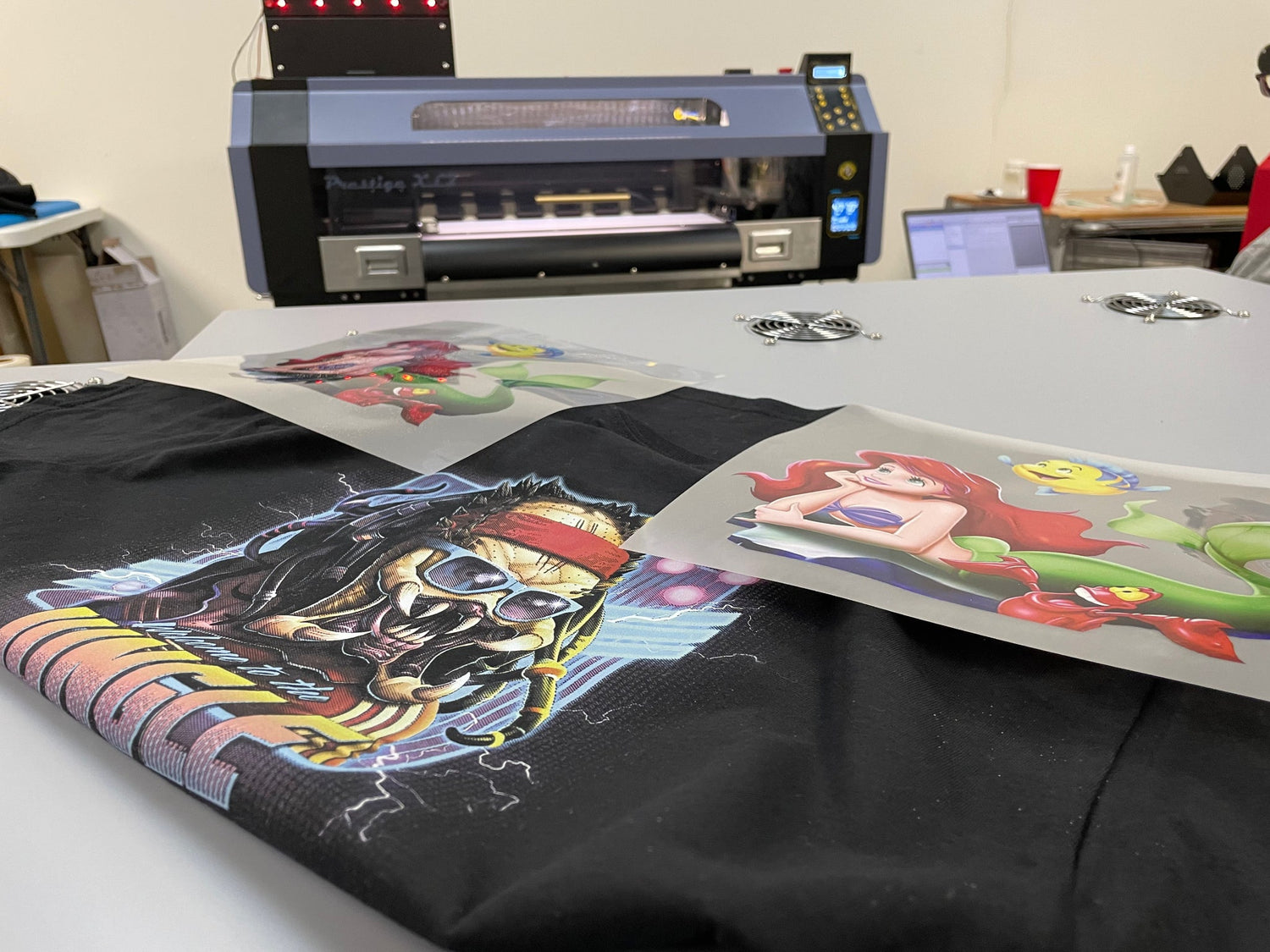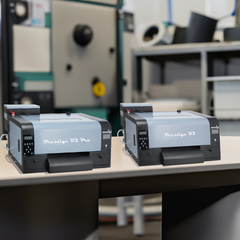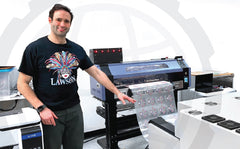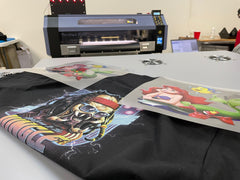Direct to Film (DTF) printing is a newer, revolutionary technology in apparel printing offering a versatile and efficient alternative to more traditional methods like screen printing. This innovative technique involves transferring designs directly from a digital file to a film, which is then applied to garments using a heat transfer machine. Understanding the technology, materials, process, and its efficiency in comparison to screen printing outlines the advantages and potential of DTF printing and how it can be the right tool for your next apparel decorating job.
Technology and Materials Used in DTF Printing
DTF printing is fairly simple and only involves a few components to get started with production, and all of these items can be found on our website at golawson.com. Here is a quick list of items you will need to get started:
- Digital Printer: Specialized DTF printers are used to print designs onto a special film, utilizing vibrant, high-quality CMYK plus White ink sets.
- DTF Film: The designs are printed onto a transparent film, which serves as the transfer medium for the final image.
- Adhesive Powder: After printing, an adhesive powder is applied selectively over the inked areas on the film.
- Heat Transfer Machine: The garment and printed film are combined using a heat transfer machine, which melts the adhesive powder, allowing it to adhere firmly to the garment.
The Process of DTF Printing - As Simple As 1. 2. 3.
- Printing: DTF printing involves printing a design onto a polyethylene terephthalate (PET) film transfer using water-based inks. The films are relatively thin, at about 0.75mm thickness, which also gives them better transferring properties. Unlike the other printing methods, DTF prints its designs as a mirror image of the actual image. As for the inks, CMYK colors will be applied first, followed by white ink. With multiple head inkjet printers, the CMYK print head is first, followed by the white print head so the printing is done in “1 pass.”
-
Adhesive Application: Once printed, the adhesive powder is applied to the inked areas on the film using a shaker or by hand. The powder must be applied uniformly onto the wet ink and spread throughout the film. An automatic shaker/powder applicator is more uniform than doing it by hand but if you are only printing individual sheets of DTF film, hand power application makes more sense from a cost and workflow perspective.
- Transfer Process: After applying the powder, the film is carefully placed inside a curing oven to melt the powder. Powder melting points usually range between 284 - 338℉ depending on different factors. Once melted, the powder becomes an adhesive that allows the design to stick to the garment. A heat press will also work if you don’t have a curing oven. Just be sure not to press it down onto the film by leaving a ⅛” - ¼” gap between the film and the heat press’ top plate. Our line of Lawson hover presses, or the Stahl’s Hottonix Hover Presses can do this job really well - applying heat without touching the film. Once your powder is melted, apply your transfer to your garment and press. Each film and powder is different but Lawson’s premium hot peel film and powder, it is recommended to heat press at about 280 degrees with 12 seconds with medium/heavy pressure, peeling immediately after.
The Advantages of DTF Printing vs. Traditional Screen Printing:
DTF (Direct to Film) printing stands as a new solution in the realm of garment printing, offering a host of advantages that surpass traditional screen printing methods in several key aspects. Here's a few examples of how DTF printing outshines its traditional counterpart:
Versatility in Design:
DTF printing boasts unparalleled versatility in design. It enables the reproduction of intricate, full-color designs with fine details that might be challenging to achieve through traditional screen printing. This flexibility empowers creators to bring to life vibrant, multi-colored artwork with sharp precision, catering to diverse consumer preferences for intricate designs.
Superior Detail Reproduction:
One of the most significant advantages of DTF printing lies in its ability to reproduce intricate details and intricate color gradients with exceptional precision. The digital nature of the process allows for high-resolution printing, capturing nuances and subtleties that traditional screen printing might struggle to replicate accurately.
Reduced Setup Time and Costs:
DTF printing minimizes the setup time and costs associated with traditional screen printing. In screen printing, each design requires the creation of separate screens. DTF, being a digital process, eliminates the need for screen preparation, reducing setup time significantly and thereby lowering overall production costs..
Faster Turnaround Times:
With its streamlined digital workflow and reduced setup requirements, DTF printing offers faster turnaround times. This efficiency is particularly advantageous for businesses catering to clients with time-sensitive demands, enabling quicker production and delivery of customized products.
Conclusion:
Digital technologies inherent in DTF printing facilitate precise color matching and consistency across multiple print runs. This consistency in color reproduction ensures that the final products meet exacting standards, enhancing brand reliability and customer satisfaction.
DTF printing represents a cutting-edge advancement in apparel printing technology, offering unparalleled versatility, efficiency, and quality. Its ability to produce vibrant, detailed designs on diverse materials sets it apart from conventional methods like screen printing. The elimination of complex setups and reduced waste make DTF printing an attractive choice for businesses seeking high-quality, cost-effective garment printing solutions.
For those eager to explore the potential of DTF printing or seeking guidance on implementing this innovative technology into their printing business, connect with industry experts at Lawson Screen & Digital Products who will provide invaluable insight and support and help guide you to the right products and technology for your project.
Embracing DTF printing opens up a world of possibilities for creating stunning, detailed designs on a wide range of garments and substrates, which has been transforming the landscape of apparel printing since its creation around 2020.




